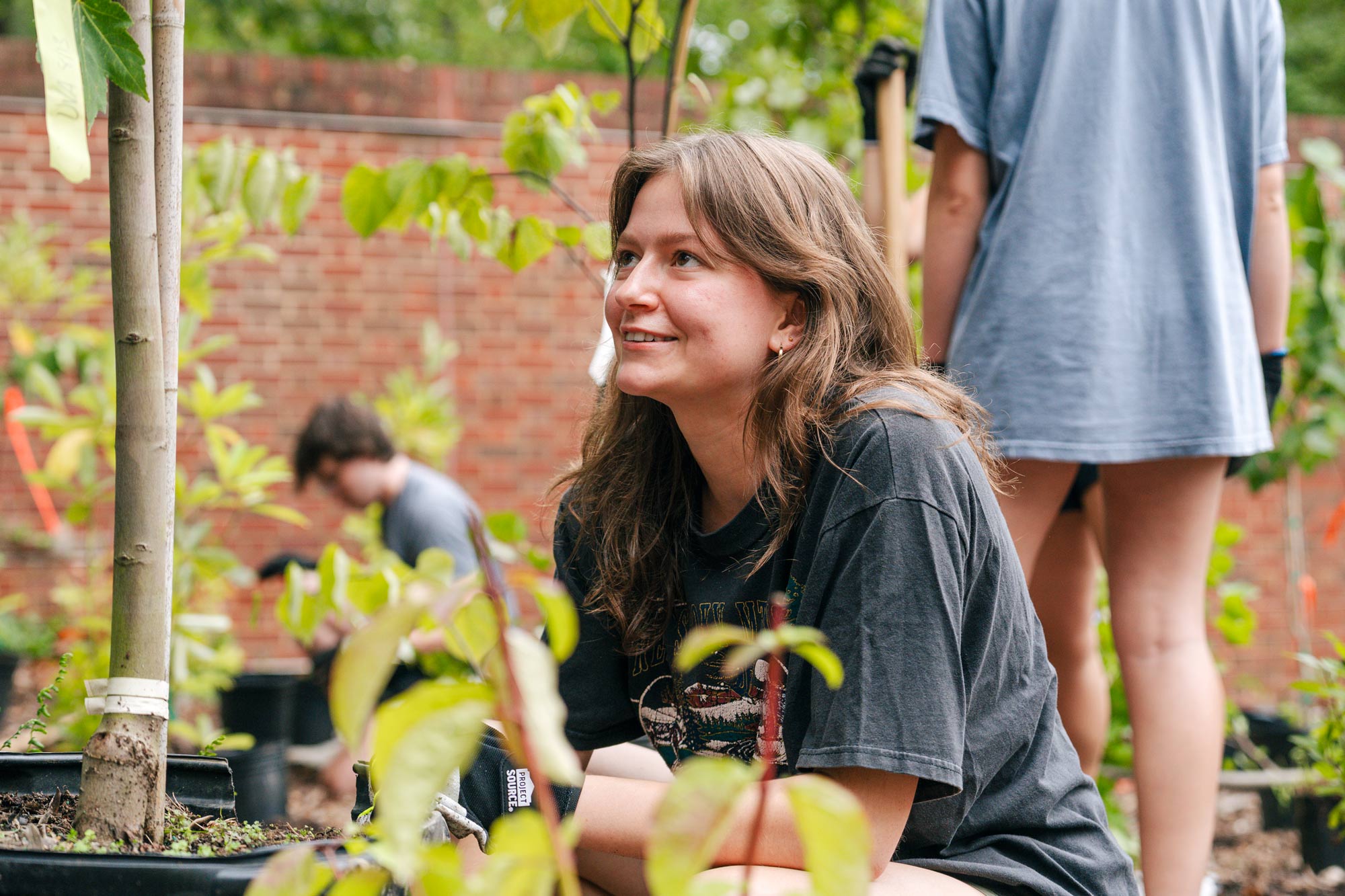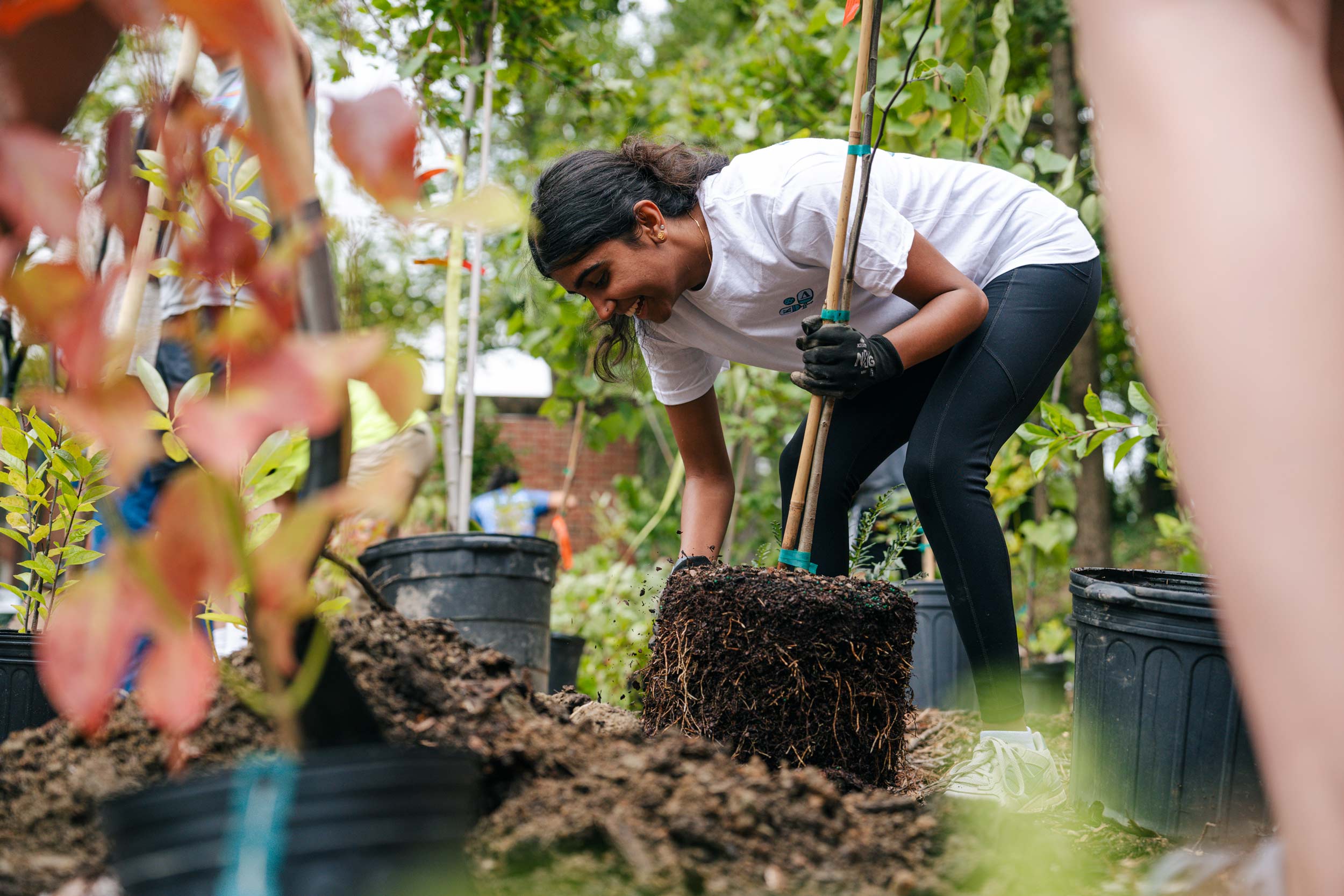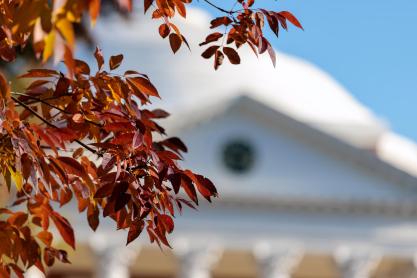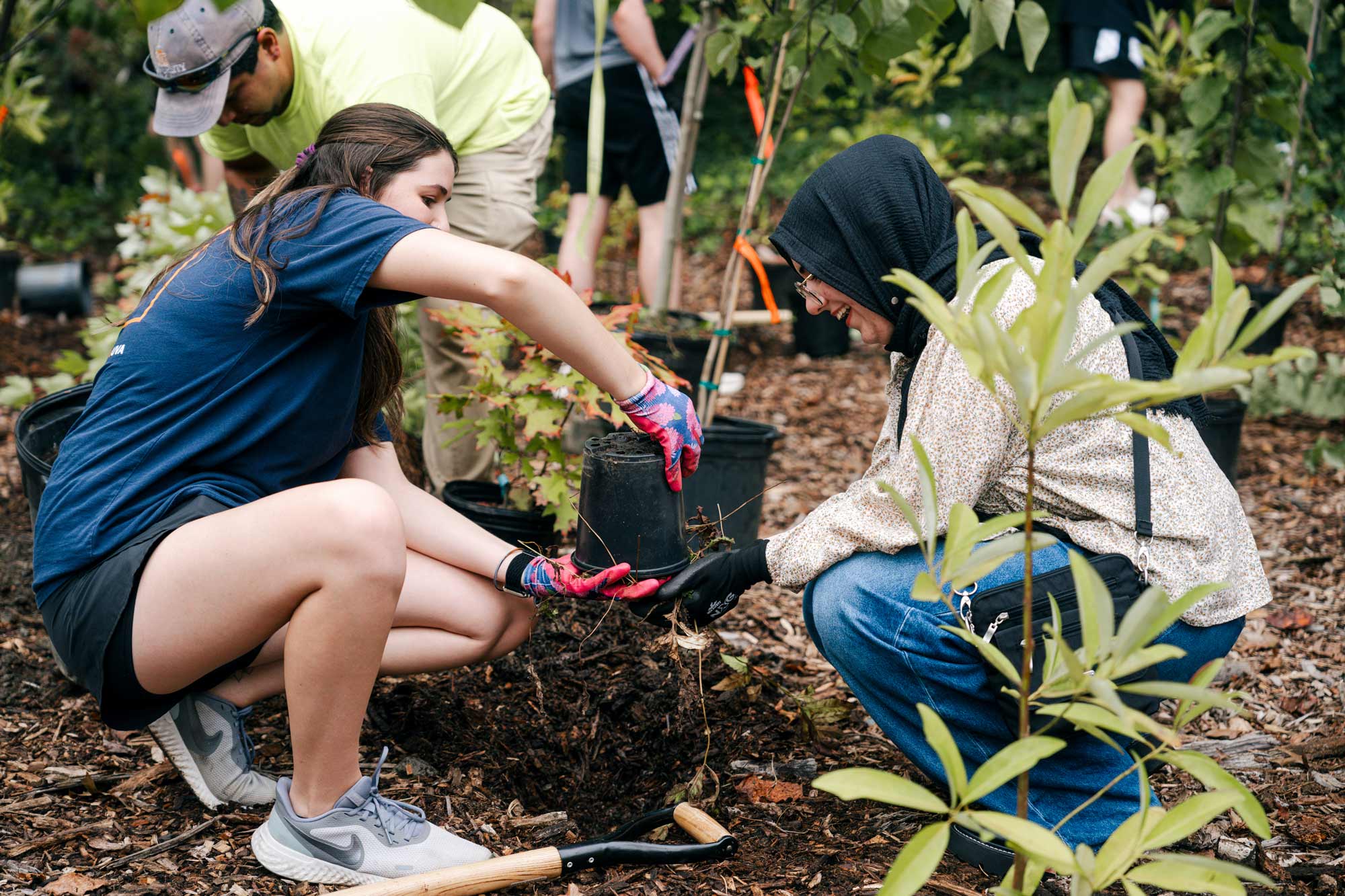It’s a mini forest where a small, ivy-encroached, mulched clearing had been.
About two dozen University of Virginia student volunteers recently planted 85 trees and shrubs in about an hour, with the assistance of four Facilities Management landscapers, as part of a student-driven forestation program.
Students are planting “forest patches” – small, densely wooded areas – on Grounds to help reduce the University’s carbon footprint. The students are following the Miyawaki method, developed by Japanese botanist Akira Miyawaki in the 1970s.
“By design, the trees are planted super densely, three trees per square meter, and the intense competition between the densely planted trees drives growth at a more rapid rate,” MaeEllen Megginson, a fourth-year environmental studies and public policy student, said. “The forest will reach maturity within decades, rather than centuries.”

MaeEllen Megginson, a fourth-year environmental studies and public policy student, is part of the Decarbonization Academy and an organizer of the recent mini forest planting. (Photo by Emily Faith Morgan, University Communications)
Megginson is part of Decarbonization Academy, a project the UVA Office of Sustainability sponsors to promote sustainable forests. Timothy Beatley, the Teresa Heinz Professor of Sustainable Communities at UVA’s School of Architecture, directs the project.
Recently, volunteers including Beatley gathered at the end of Hancock Drive, where senior landscape architect Helen Wilson, from the Office of the Architect for the University, had arranged the potted plants on a mulched area next to the pavement. Four University landscapers, who had brought a pick-up truck of shovels and hand tools, gave a demonstration on how to dig holes and nestle the plants in the ground. Among the students, the more experienced helped the neophytes.
Last year, students planted forest patches near Scott Stadium, between the Architecture School and Carr’s Hill, and on Hereford Drive.
“In less than a year since initial planting, these three forest patches have sequestered approximately 80 kilograms of carbon dioxide equivalent,” Megginson said. “We also calculated carbon sequestration estimates for the eight patches we will have planted at the end of this year. Twenty years after the plants reach one inch in diameter, our predictions estimate these eight patches will have sequestered 241.4 metric tons of carbon dioxide equivalent.”

Anika Gupta, a third-year environmental science major minoring in public policy, is one of the student organizers of the mini forest project to help reduce the University’s carbon footprint. (Photo by Emily Faith Morgan, University Communications)
“MaeEllen and I were part of the team this last summer and we continued that work,” said Anika Gupta, a third-year environmental science major minoring in public policy, a Decarbonization Academy fellow and a planter at Hancock Drive. “We continue to research the patches that were already planted, and we planned new patches.”
The students walk the Grounds and develop a list of potential sites, which they grade by student use, available water and sunlight, and what the trees would contribute to stormwater management and erosion control.












